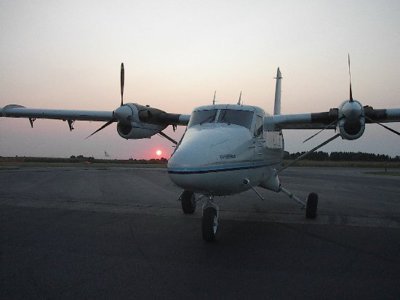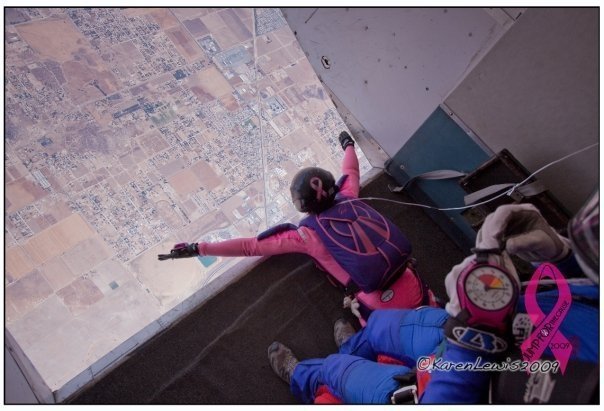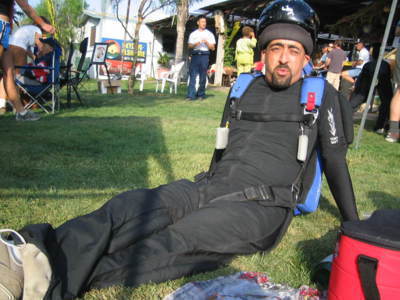Recommended Posts
Erroll 80
Quotehaha. what other answer to expect from a jumpship pilot. lol.
Alas, only the first response attempted to address the topic of this thread.
jannas 0
QuoteNo one's ever drowned from a bad spot?
Flotation gear? Lack of preperation? Proper procedures for getting out of gear when landing in water? B License training? Sound familiar. No, I will not accept that a bad spot ever killed or hurt a jumper as the cause.
www.diverdriver.com
ATP/D-19012
FB #4125
Quotehaha. what other answer to expect from a jumpship pilot. lol.
Or a jumpship pilot who has enough jumps and time in the sport to know that it is a cop out to blame the spot for the incident. Personal responsibility for your own skydive remember? See above for the other reasons why this is a cop out.
www.diverdriver.com
ATP/D-19012
FB #4125
The "official report" is a fiction people absorbed from some afterschool special and never questioned. There IS no "official report". There is no omnipotent observer who answers our questions in a timely and unbiased manner on form AAA-123 filed with the Skydiving Regulatory Agency. We're on our own, people. YOU'RE on your own.
You're an adult and you get to question and consider. Think for yourselves. Ask questions. Speculate. Make connections with your mind. Think.
First Class Citizen Twice Over
Michele 1
QuoteOn the other hand, if all the facts and official report are available, what is there to discuss?
Don't turn too low to the ground. It can kill you...
There's still lots to discuss, imho.
Why did they turn low? What can I learn to prevent me from being in that position in the first place? Is it better to take a downwinder instead of flat turning into the wind at 80 feet? Were they avoiding another jumper? How many degrees turn was needed instead of a 180 to avoid the other jumper? Did they unstow their brakes before final, or did they do it late, and only then discover the problem? Would a canopy control class have taught this jumper something to save his ass/head?
As a very low time jumper, I want to know the whole process. The why's, where's, how's. It is not ever enough to say "the ground will kill you"- I know that. What I want to know is what led to the situation in the first place - and how to make sure (or as sure as I can) that if I ever find myself in that situation, I have a different option.
Given that this is a sport where you can do everything right and still die, I really don't see that happening in the majority of cases. Therefore, I want to know what was done wrong so I can learn.
Speculation, then, creates an area of learning, a reasonable place to discuss and to grow my knowledge base. To show me where I am wrong, where I am right, and where I need to learn more.
Just my .02, though. Take it for what it's worth.
Ciels-
Michele
~Do Angels keep the dreams we seek
While our hearts lie bleeding?~
When Jack died, we had no idea why he passed out under canopy, thus not being able to steer and land safe. To this day all I have is speculation.
Deuce 1
I suppose you are still correct, because to be on that big sequential you had to have skills recognized by the organizers, and me and two other jumpers managed to put it down into a 5' maintenance trail in between the stakes uninjured and without damaging our gear.
Hmmm. Grist for the mill.
Ron 10
QuoteFlotation gear? Lack of preperation? Proper procedures for getting out of gear when landing in water? B License training? Sound familiar. No, I will not accept that a bad spot ever killed or hurt a jumper as the cause.
There was an entire load dropped into I think Lake erie.
100% bad spot.
Most times I would agree with you. But there are cases.
rehmwa 2
is it the fault of a bad spot
or is it the fault of 'accepting' the bad spot
in the end, the skydiver chooses to leave the plane (yes there are stupid exceptions to this one)
...
Driving is a one dimensional activity - a monkey can do it - being proud of your driving abilities is like being proud of being able to put on pants
I've been on big way event, where we got a bad spot. There weren't a lot of options as to were we could land. Power lines crossing over the roads, swamp, and a small church parking lot. The LO couldn't see the ground due to clouds, so he counted on the pilot to get us in the right place. We were lucky, only one person got hurt.
Ron 10
QuoteAm I thinking of the right incident. Weren't these jumpers military? I don't think they were able to refuse the spot. Those jumpers were trusting that the pilot had the correct information.
Im thinking of a civilian jump in the 70's out of a beach 18.
They were over solid overcast and getting info from center to determine the exit point. Problem is center was looking at the radar return for another airplane.
All that jumped died.
There was an artical on it in Parachutist last year.
wmw999 2,534
60's, not 70's. When I started jumping in the mid-70's, there was noway, nohow, no-ever that most folks would consider letting the pilot spot, because of this.
Wendy W.
I know what you are saying about spotting and the jumper is responsible for his own safety and shouldn't leave the plane unless he nows where he is and is positive he is going to be able to get back.
The fact is, if you get out of the plane over a hazard and don't notice it until you are tracking right at it or pulling, and end up in a tree or breaking something falling out of the tree. Then the bad spot lead to that injury.
People need to learn to spot. Not just look out the door and see the dz at a 30 degree angle out the door. Look straight down, get your exit point lined up directly under the plane.
Anywhere I jump that is generally true. However, if there are NO outs at the plane's current location (rare), then leaving the plane in that location is probably a bad idea anyway, whether or not the green light is on. So in that case it behooves the jumper to NOT leave the plane. Looked at that way as well, you could say that a bad spot does not cause injuries, since the jumper also has a role.
|
Harry, FB #4143
QuoteQuoteAm I thinking of the right incident. Weren't these jumpers military? I don't think they were able to refuse the spot. Those jumpers were trusting that the pilot had the correct information.
Im thinking of a civilian jump in the 70's out of a beach 18.
They were over solid overcast and getting info from center to determine the exit point. Problem is center was looking at the radar return for another airplane.
All that jumped died.
There was an artical on it in Parachutist last year.
flyangel may be referring to the Pismo Dunes incident, where the Arizona Jumper died offshore during a movie shoot.
My wife is hotter than your wife.
Ron 10
QuoteAren't there two incidents? One with civilians and another with military?
I don't know.
I dont have every incident report memorized
I get a little fuzzy at events that happend before I started jumping...Even more fuzzy at events that happend before I was born.
Ron 10
Quoteflyangel may be referring to the Pismo Dunes incident, where the Arizona Jumper died offshore during a movie shoot
Could be I don't usually follow movie accidents, or stunts...
Quoteflyangel may be referring to the Pismo Dunes incident, where the Arizona Jumper died offshore during a movie shoot
I had forgotten about this one. But that's a good point, was this incident due to a bad spot?








haha. what other answer to expect from a jumpship pilot. lol.
Share this post
Link to post
Share on other sites